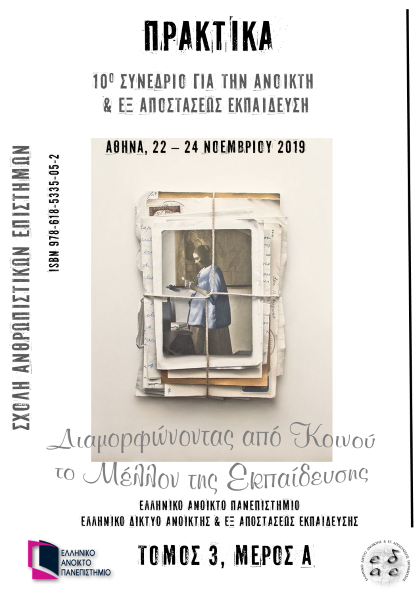Η Παιδαγωγική Αξιοποίηση της Διαδραστικής Τηλεδιάσκεψης και η Παραγωγή Εκπαιδευτικού Υλικού για την εξ Αποστάσεως Επιμόρφωση πάνω στο Νέο Ρόλο του Εκπαιδευτικού και τη Διδακτική Παρουσία σε Σύγχρονα Μαθησιακά Περιβάλλοντα

Περίληψη
Η παρούσα έρευνα προσπαθεί να διερευνήσει την έννοια της διδακτικής παρουσίας όπως αυτή παρουσιάζεται σε ένα περιβάλλον διαδραστικής τηλεδιάσκεψης σύμφωνα με το μεθοδολογικό πλαίσιο του προγράμματος ΟΔΥΣΣΕΑΣ.
Για τη μελέτη της Διδακτικής Παρουσίας σε τέτοιου είδους μαθησιακά περιβάλλοντα είναι απαραίτητη η μελέτη του ρόλου του εκπαιδευτικού και να προσδιοριστούν οι απαραίτητες δεξιότητες έτσι ώστε ο εκπαιδευτικός να μπορεί να διδάσκει τόσο την τοπική όσο και την μακρινή τάξη. Η έρευνα στηρίχθηκε στις αρχές της μεθοδολογίας της έρευνας δράσης και εφαρμόστηκε σε εκπαιδευτικούς Δημοτικών Σχολείων στην Αττική και την Κρήτη. Περιλάμβανε τους μαθητές της 5ης και 6ης τάξης. Η έρευνα βασίστηκε στη μεθοδολογία της διαδραστικής τηλεδιάσκεψης, όπως εφαρμόζεται στο μεθοδολογικό πλαίσιο του προγράμματος ΟΔΥΣΣΕΑΣ καθώς και στο μοντέλο Συνδυαστικής Μάθησης. Τα αποτελέσματα έδειξαν την εμφάνιση συγκεκριμένου ρόλου και την ανάπτυξη συγκεκριμένων δεξιοτήτων από μέρους των εκπαιδευτικών σε ένα παιδαγωγικό πλαίσιο που βασίζεται σε μεθοδολογικές προσεγγίσεις και σε περιεχόμενο με έντονη τη διδακτική παρουσία. Μέσα από αυτή την έρευνα δημιουργήθηκε εκπαιδευτικό υλικό για την εξ αποστάσεως επιμόρφωση των εκπαιδευτικών πάνω στο νέο ρόλο και τη διδακτική παρουσία σε σύγχρονα μαθησιακά περιβάλλοντα.
Λεπτομέρειες άρθρου
- Τεύχος
- Τόμ. 10 Αρ. 3A (2019)
- Ενότητα
- Άρθρα


